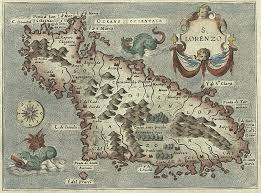
Introduction
Madagascar, the fourth largest island in the world, is renowned for its unparalleled biodiversity and vibrant culture. As an isolated landmass, it is home to more than 200,000 species of plants and animals, making it a crucial part of global efforts for conservation. Given its rich natural heritage and cultural significance, understanding Madagascar is vital, especially as environmental concerns grow globally.
Biodiversity and Conservation Efforts
Approximately 90% of the wildlife found in Madagascar is endemic, meaning it can be found nowhere else on Earth. Iconic species such as the lemur, fossa, and aye-aye exemplify the island’s unique evolutionary trails. However, habitat destruction, driven by deforestation for agriculture and logging, poses a serious threat to this rich biodiversity. Immediate action is required to prevent further species loss and habitat degradation.
Conservation organisations, both local and international, have ramped up efforts to protect Madagascar’s ecosystems. Initiatives include reforestation projects, biodiversity research, and establishing protected areas. For example, the Madagascar Biodiversity Partnership is working towards preserving critical habitats while involving local communities in sustainable practices.
Cultural Significance
Beyond its natural marvels, Madagascar boasts a diverse array of cultures influenced by African, Arab, and French traditions. The Malagasy people, the island’s indigenous inhabitants, celebrate their heritage through music, dance, and unique festivals. The annual ‘Famadihana’ or turning of the bones ceremony reflects their deep-rooted beliefs in ancestral spirits and family ties.
Tourism plays a significant role in recognising and preserving these cultural practices. With the arrival of eco-tourism, visitors are drawn not only to the spectacular landscapes but also to the authentic experiences provided by local communities. These interactions foster appreciation and understanding of Madagascar’s rich cultural tapestry while also benefiting the local economy.
Conclusion
Madagascar stands at the crossroads of ecological preservation and cultural appreciation. Its unique ecosystems and heritage make it a vital area for conservation efforts amid the growing challenges of climate change and deforestation. As the world becomes more conscious of environmental issues, Madagascar’s role highlights the need for sustainable practices that benefit both the environment and local communities. In the years to come, increased awareness and responsible tourism could pave the way for a more sustainable future for this island of wonders.
You may also like

Exploring Monmouth: History, Attractions and Community

Understanding Glasgow Airport and Its Significance
